Events 2006
The Donald Keene Center celebrates its 20th Anniversary in 2006!
January 26
Marketing the Bunjin: TAKEBE Ayatari as an 18th-Century Entrepreneur of the ArtsDr. Lawrence Marceau (Senior Lecturer in Japanese, University of Auckland)
403 Kent Hall, Columbia University (116th St. and Amsterdam Ave.)
5:00 PM - 6:30 PM
February 2
"Korean Influences in Japanese Culture" Lecture SeriesThe Dual Career of 'Arirang': The Korean Resistance Anthem That Became a Japanese Pop Hit
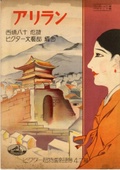
E. Taylor Atkins (Associate Professor of History, Northern Illinois University)
403 Kent Hall, Columbia University (116th St. and Amsterdam Ave.)
6:00 PM - 7:30 PM
Co-sponsored by The Weatherhead East Asian Institute and The Center for Korean Research
February 8
Lecture: Bashōfu: Japan's Folk Craft Movement and the Construction of a New OkinawaDr. Amanda Mayer Stinchecum (Historian)
403 Kent Hall, Columbia University (116th St. and Amsterdam Ave.)
6:00 PM - 7:30 PM
From the time of his first visit to Okinawa in 1938, YANAGI Sōetsu, founder of Japan's Folk Craft (Mingei) Movement, promoted an image of bashōfu (cloth made from the fiber-banana ) as emblematic of an essentialized, idyllic and homogeneous Okinawan culture. Yanagi's view of Okinawa as a "tropical country," a southern island paradise, became the theme of the islands' tourism industry after Japan's defeat in 1945.
Since the 16th century, bashōfu has clothed the people of the Ryukyu archipelago, from Ryukyu's kings to its poorest villagers. Production and use of the cloth persists today. Through the intervention of Yanagi and his colleagues, the Mingei view of Okinawa has shaped an image of the islands that came to be held by both Okinawans and Mainland Japanese. This lecture examines bashōfu as one medium through which members of the Mingei Movement and other outsiders, and through them, Okinawans themselves, have defined Okinawan identity.
Dr. Amanda Mayer Stinchecum is an independent scholar specializing in the history of Ryukyu/Okinawa. She focuses on cultural and economic history, issues of marginalization, tourism development, and identity as viewed through the medium of textile and clothing production, technology, design, and use. |
 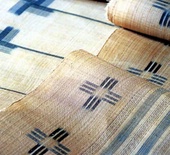 |
February 23
What Did a Regent Do? Regent FUJIWARA Tadahira in the 930sJoan Piggott (Gordon L. Macdonald Professor of History, University of Southern California)
403 Kent Hall, Columbia University (116th St. and Amsterdam Ave.)
6:00 PM - 7:30 PM
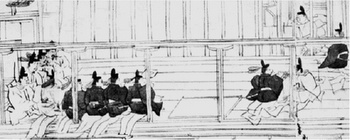
March 2
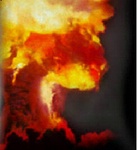 Screening and Discussion: Original Child Bomb
Linda Hoaglund (Senior Film Curator, Japan Society), Carey Schonegevel McKenzie (Director),
Screening and Discussion: Original Child Bomb
Linda Hoaglund (Senior Film Curator, Japan Society), Carey Schonegevel McKenzie (Director), Greg Mitchell (Author)
304 Barnard Hall, Barnard College
6:00 PM - 7:30 PM Inspired by Thomas Merton's poem, ORIGINAL CHILD BOMB shows the human cost of nuclear weapons. The bombings of Hiroshima and Nagasaki are depicted through declassified footage, photographs, drawings and testimonies of mothers, brothers and soldiers.
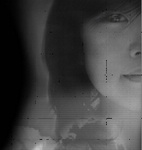 Ordinary people gaze upon the nuclear past and its terrifying present. They expose the political rhetoric surrounding "security" and "weapons of mass destruction." The film is a wake-up call and an invitation to action.
Ordinary people gaze upon the nuclear past and its terrifying present. They expose the political rhetoric surrounding "security" and "weapons of mass destruction." The film is a wake-up call and an invitation to action. March 9
"Korean Influences in Japanese Culture" Lecture SeriesBetween Life and Death: Diaspora and Koreans in Japan
Sonia Ryang (Associate Professor of Anthropology, Johns Hopkins University)
403 Kent Hall, Columbia University (116th St. and Amsterdam Ave.)
6:00 PM - 7:30 PM
Co-sponsored by The Weatherhead East Asian Institute and The Center for Korean Research
March 23
Lecture: Singing Tales of the Gishi: Naniwa-bushi and the 47 Ronin in Meiji Japan| Henry Smith (Professor of Japanese History, Columbia University) 403 Kent Hall, Columbia University (116th St. and Amsterdam Ave.) 6:00 PM - 7:30 PM The art of storytelling known as "naniwabushi" (or "rôkyoku") emerged in early years of the 20th century as the first true medium of mass entertainment in modern Japan, spreading through live performance, phonograph records, and radio. Although it hangs on by a thread today, its impact on modern Japanese popular culture was immense. This talk explores the special role of the singer TÔCHÛKEN Kumoemon and his tales of the 47 Ronin in helping to raise naniwabushi from the art of lower-class street performers to the "voice of the Japanese nation." |
 |
April 12
Special Tea Demonstration and LectureDr. Genshitsu Sen
Low Memorial Library, Rotunda, Columbia University (116th Street btw. Broadway and Amsterdam Ave.)
4:00 PM - 5:10 PM
April 12
Awarding of the First Annual Donald Keene Prize for the Promotion of Japanese CultureAnnual Soshitsu Sen XV Distinguished Lecture on Japanese Culture by Donald Keene: "To Japan by Way of Columbia"
Low Memorial Library, Rotunda
Columbia University (116th Street btw. Broadway and Amsterdam Ave.)
5:30 PM
RSVP by April 7th
We regret that these events coincide with the observance of the Eve of the First Day of Passover. Whilst every consideration was made to avoid this conflict, the recipient of the Donald Keene Prize is traveling to the United States from Japan within a very limited schedule. We apologize for any inconvenience this may cause.
April 21
Award Ceremony for the Japan-U.S. Friendship Commission Prize for the Translation of Japanese LiteratureMain Reading Room, C.V. Starr East Asian Library
Kent Hall, Columbia University (116th St. and Amsterdam Ave.)
6:00 PM
and
Yosei Sugawara, for his translation of The Gift of Numbers by OGAWA Yôko
RSVP by April 14th
The Donald Keene Center celebrates its 20th Anniversary in 2006!
September 28th, 2006
"Spiritual Matters: Material Culture and Japanese Religion" Lecture Series:The Sword and the Jewel: Symbols of Life and Death in Medieval Japan
Bernard Faure, Columbia University
403 Kent Hall
6:00 PM - 7:30 PM
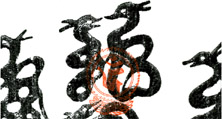 In medieval Japan, a number of Buddhist deities emerged, whose main function was to increase human life - to protect that life from the outset, during the first stages of embryonic gestation - and to transform death into a preliminary, quasi-embryological, preliminary stage toward rebirth. These deities were often connected by specific symbols, for instance the wish-fulfilling jewel (cintâmani) and the sword. This talk will focus on two such figures, Aizen and Fudô, and on their role in medieval representations of power and fecundity.
In medieval Japan, a number of Buddhist deities emerged, whose main function was to increase human life - to protect that life from the outset, during the first stages of embryonic gestation - and to transform death into a preliminary, quasi-embryological, preliminary stage toward rebirth. These deities were often connected by specific symbols, for instance the wish-fulfilling jewel (cintâmani) and the sword. This talk will focus on two such figures, Aizen and Fudô, and on their role in medieval representations of power and fecundity.
October 5th, 2006
Teaching and Learning Japanese from a Multidisciplinary ViewpointWako Tawa, Amherst College
403 Kent Hall
6:00 PM - 7:30 PM
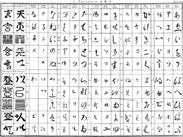 Discussing how best to teach Japanese as a foreign language is meaningless unless teachers of Japanese are aware of the process that students go through to learn the language. Understanding how an adult student learns a foreign language, however, is not an easy task, because it requires knowledge in more than one disciplinary field. The talk addresses this issue and discusses its implications for the teaching of Japanese as a foreign language.
Discussing how best to teach Japanese as a foreign language is meaningless unless teachers of Japanese are aware of the process that students go through to learn the language. Understanding how an adult student learns a foreign language, however, is not an easy task, because it requires knowledge in more than one disciplinary field. The talk addresses this issue and discusses its implications for the teaching of Japanese as a foreign language. October 19th, 2006
"Spiritual Matters: Material Culture and Japanese Religion" Lecture Series:Nenbutsu: From Mantra to Manzai
Mark Blum, SUNY Albany
403 Kent Hall
6:00 PM - 7:30 PM
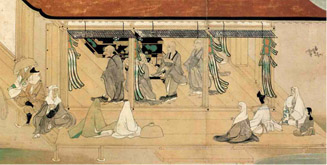
October 27th-28th, 2006 (Friday – Saturday)
Twentieth Anniversary Symposium, "The Past and Future of the Book: Transition and Translation in Japanese Publishing Culture"October 27th, 2006
403 Kent Hall9:00AM - 4:50PM
Academic Conference: "Texts and Contexts: Historicizing Japanese Literature in the Meiji, Taishô, and Early Shôwa Periods"
9:00AM – 12:20AM Morning Session
Kôno Kensuke (Nihon University)* "1930-40 nendai no shuppan bunka to bungaku no keishiki: Sengo bungaku to dôjin zasshi" [English title: Postwar literature and literary coterie magazines]
Yamamoto Yoshiaki (Gakushûin University)
* "Media no naka no ‘shishôsetsu sakka’: Kasai Zenzô no ba’ai" [English title: The media and the I-novelist]
* These two papers will be delivered in Japanese.
"Seeking the Concourse of Voice and Écriture: Rethinking the Genealogy of Modern Japanese Poetry"
Tsuboi Hideto (Nagoya University)
2:00PM – 4:50PM Afternoon Session
Sari Kawana (University of Massachusetts)
"Incompetent Authors and Efficient Editors: Behind the Scenes of Modern Japanese Literature"
Ted Mack (University of Washington)
"Diasporic Imperialism: 'Colonial Literature' in São Paulo, 1908-1941"
Jonathan Zwicker (University of Michigan)
"Bakin among the Bostonians: The Japanese Novel in Nineteenth-Century America"
October 28th, 2006 (Saturday)
301 Philosophy Hall 9:00AM - 3:30PM
Professional Seminar: "Translating Japan: The Challenges of Publishing Japanese Authors Overseas"
9:30AM – 10:15AM Preliminary Talk:
Stephen Snyder (Middlebury College)
"Some Issues in Publishing Japanese Authors Today"
10:30AM – 12:30PM
"From Translation to Publication to Readership: A Workshop"
Scholars, translators, publishers, and representatives of a number of organizations that are actively involved in the enterprise of translation will be on hand to share their perspectives with the audience.
2:00PM – 2:45PM Special Lecture:
Koizumi Masashi (Kinki University)
"The History and Prospects of Textbook Publishing in Postwar Japan"
A related symposium is being held at the New York Public Library. For further information, please visit the Library's website.
October 31st, 2006
Writing in the Web of Words: An Evening with Yoko TawadaYoko Tawada, Author
301 Philosophy Hall
6:00 PM - 7:30 PM
Presented in collaboration with the Japan Foundation, New York, and Columbia University's Department of Germanic Languages & Literatures.
November 9th, 2006
"Spiritual Matters: Material Culture and Japanese Religion" Lecture Series:Nichiren's "Great Mandala": Practice, Community, and Lineage
Jacqueline Stone, Princeton University
403 Kent Hall
6:00 PM - 7:30 PM
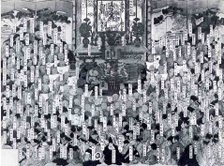 The "great mandala" (daimandara) devised by the Buddhist teacher Nichiren (1222-1282) depicts the assembly of the Lotus Sūtra on Sacred Vulture Peak. Inscribed entirely in characters, it is at once both sacred text and sacred object. In Nichiren's lifetime, it served not only as a personal object of worship for his followers but united them as a community; in the later Nichiren tradition, it has also played a key role in lineage transmission and as a marker of sectarian identity.
The "great mandala" (daimandara) devised by the Buddhist teacher Nichiren (1222-1282) depicts the assembly of the Lotus Sūtra on Sacred Vulture Peak. Inscribed entirely in characters, it is at once both sacred text and sacred object. In Nichiren's lifetime, it served not only as a personal object of worship for his followers but united them as a community; in the later Nichiren tradition, it has also played a key role in lineage transmission and as a marker of sectarian identity. November 16th, 2006
"Spiritual Matters: Material Culture and Japanese Religion" Lecture Series:Secular Garment, Sacred Cloth: The Four-Hundred-Year Life of a Japanese Textile
Terry Satsuki Milhaupt, Independent Scholar
403 Kent Hall
6:00 PM - 7:30 PM
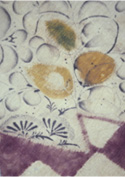
November 17th, 2006
Fields in the Manyoshu: Between Nature and Culture in Early Japan『萬葉集』の「野」−日本古代における自然と文化の境界領域
Professor OGAWA Yasuhiko, Aoyama Gakuin University
403 Kent Hall
1:00-2:30 PM
『萬葉集』の歌人たちは、自然、特に「野」の花・草・鳥・動物を愛した。しかし、それは素朴な自然愛ではなかった。例えば、歌人たちが最も愛好した 萩は、平城京の郊外の開発によって生まれた「野」に咲く花であった。自然と文化の間に新たに創り出された「野」という環境が、日本人の自然との関わり方の 原型を形作ったのである。
This lecture will be presented in Japanese.
November 30th, 2006
Twentieth Anniversary ConcertGagaku: An Evening of Japanese Classical Music and Dance
Ono Gagaku Society (Tokyo) and celebrants of the International Shinto Foundation (New York)
6:00 – 7:00 PM: Pre-Concert Reception
7:00 – 8:30 PM: Concert
Entrance is at 91 Claremont Avenue, just north of 120th Street between Broadway and Riverside Drive. Map & Directions: http://www.theriversidechurchny.org/about/?directions
Paid parking is available at Claremont Avenue Garage.
Entrance is on 120th Street, between Riverside Drive and Claremont Avenue
Program:
Part I: Orchestral Works (Kangengaku)
Part II: Sacred Shrine Maiden Dance (Kagura mai)
Part III: Dance Pieces (Bugaku)
The Ono Gagaku Society, which celebrates its 120th anniversary next spring, was founded in 1887 by Ryōdo Ono, chief priest of the Ono Terusaki Shrine in Tokyo. It is the oldest public Japanese gagaku orchestra and dance group in Japan and is one of the very few public troupes of musician-dancers to be trained exclusively by retired masters of the Music Department of the Board of Ceremonies of the Imperial Household Agency (Kunaichō shikibushoku gakubu). The Ono Gagaku Society, currently comprised of ninety members, performs at Shrine ceremonies and public venues throughout Japan. Since 1972, it has performed in the United States and Europe and was awarded the 1980 Grand Prix by the France Records Association for distinguished performance in the category of Non-Western Music. The Ono Gagaku Society maintains a training school for gagaku musicians in Tokyo.
This event is free and open to the public. No reservations are necessary.
This concert is presented by the Institute for Medieval Japanese Studies, Columbia University and sponsored by the International Shinto Foundation (New York) and the International Foundation for Arts and Culture (Tokyo).
December 13th, 2006
Hitomi Kanehara reading: Snakes and EarringsHitomi Kanehara, author
403 Kent Hall
6:00 PM - 7:30 PM
Hitomi Kanehara was born in Tokyo on August 8, 1983. She stopped attending school at the age of eleven. After she left home as a teenager, she sent her stories to her literary translator father by e-mail and he helped her edit them. At the age of 21, she wrote Snakes and Earrings which won the 2004 Akutagawa Prize, a prestigious Japanese literary award. One of the judges, the celebrated writer Ryu Murakami, said her book was ‘easily the top choice, receiving the highest marks of any work since I became a member of the selection panel.’ The Japanese edition of Snakes and Earrings has sold over a million copies, topping all the bestseller lists. Her other books include Ash Baby, Amebic, and her latest work Autofiction.